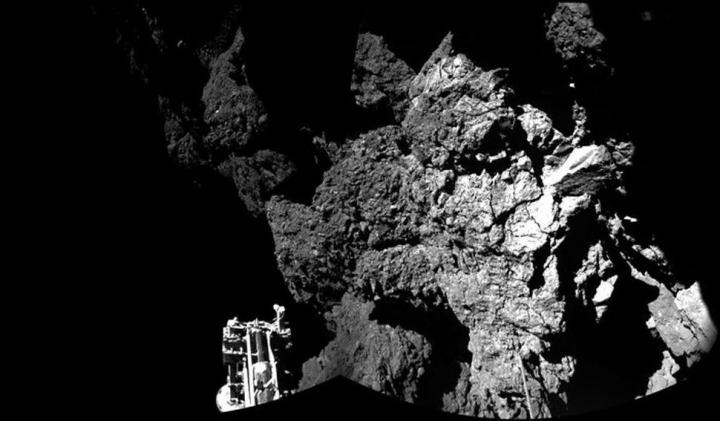
Philae stumbled across this incredible discovery while conducting a routine molecule-collection experiment during its rough initial landing, as well as where it finally came to rest. By utilizing its onboard Cometary Sampling and Composition (COSAC) instrument, the lander gathered a series of molecules some 10 kilometers off the surface of 67P. Back on Earth, Max Planck Institue for Solar System Research scientist Fred Goesmann (and several of his colleagues) identified 16 different organic compounds after analyzing the samples with COSAC’s mass spectrometer. What’s perhaps most intriguing is that several of the discovered compounds have yet to show up on any other studied comet in the past.

The discoveries don’t end with just COSAC and Goesmann’s findings, either. While conducting a separate study, fellow scientist Ian Wright put another one of Philae’s onboard devices to use (this time it’s one called a Ptolemy instrument) to take readings of the ambient gas surrounding the lander. The instrument recorded traces of carbon monoxide, carbon dioxide, and water vapor, while also reading an especially high level of the formaldehyde-related compound, polyoxymethylene.
While these findings represent a substantial step forward in terms of what’s been found on comets in the past, Goesmann does point out each of these molecules found on 67P can be formed abiologically. That is, the formation of each compound could be created in the absence of living organisms, perhaps by way of UV irradiation and radiolysis of ice from solar cosmic rays. Still, the scientists also acknowledge that most of the compounds found on 67P are predecessors of DNA-forming nucleobases like amino acids and sugars, so it’s entirely possible that life on Earth could have been “seeded” by a comet or meteor millions of years ago.
“I think this absolutely bears on origin of life studies,” scientist Ian Wright tells Gizmodo. “I believe there are abiological compounds in comets that, if they were to have rained down on the surface of the Earth, and given the right conditions, could have helped life get started.”
Though it may be some time before significant results come from Philae’s recent findings, it’s still incredibly fascinating to see the kind of progress made towards uncovering one of mankind’s greatest mysteries.


